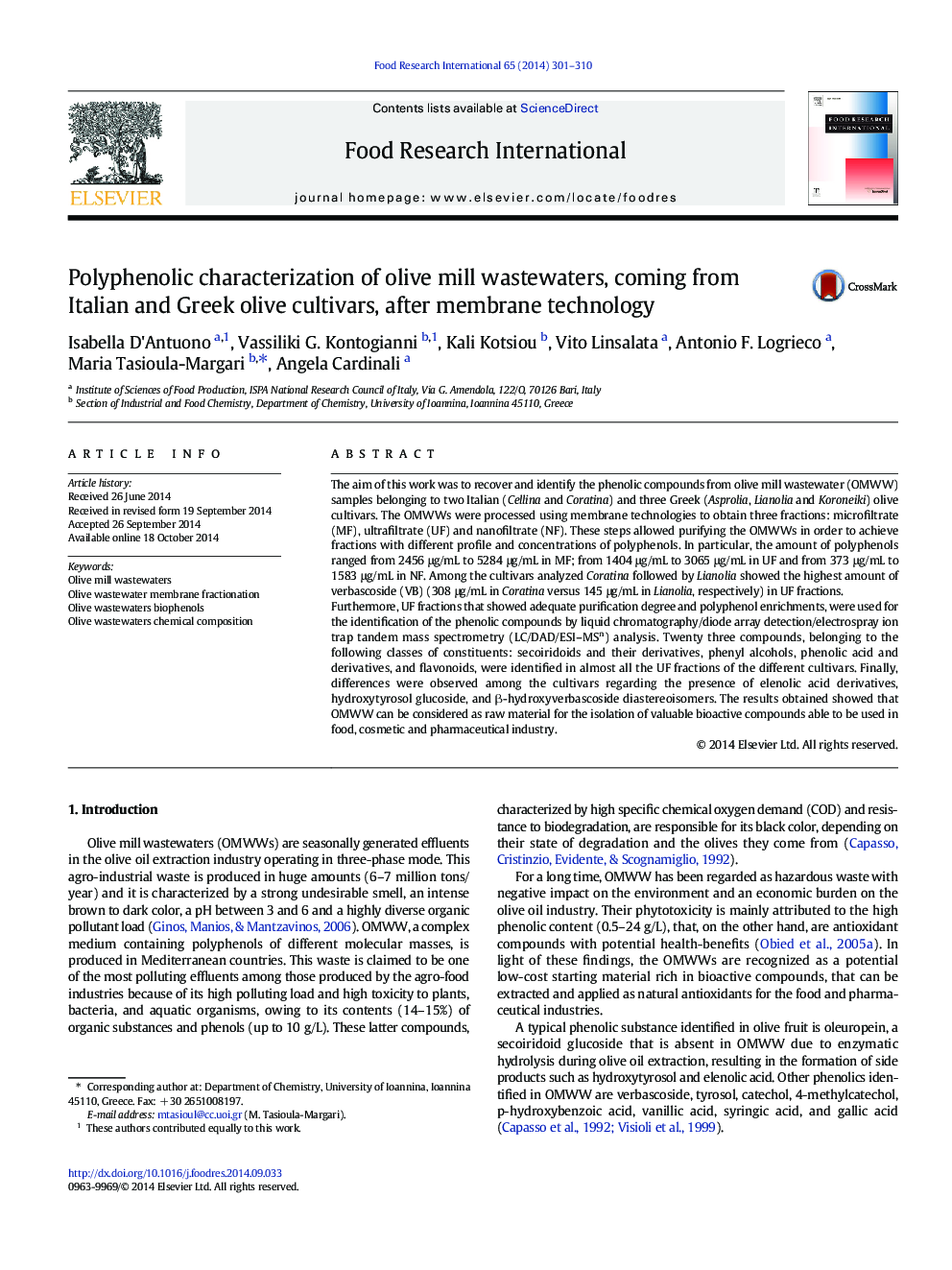| کد مقاله | کد نشریه | سال انتشار | مقاله انگلیسی | نسخه تمام متن |
|---|---|---|---|---|
| 4561580 | 1330661 | 2014 | 10 صفحه PDF | دانلود رایگان |
• OMWWs were processed using membrane technologies with filters at different porosity.
• The ultrafiltrate fraction gave good purification degree and polyphenol enrichment.
• The most abundant compound is HT followed by Tyr.
• Identification of phenols from OMWW from Italian and Greek olive cultivars showed differences.
• OMWW, a raw material for use in food, cosmetic and pharmaceutical industry
The aim of this work was to recover and identify the phenolic compounds from olive mill wastewater (OMWW) samples belonging to two Italian (Cellina and Coratina) and three Greek (Asprolia, Lianolia and Koroneiki) olive cultivars. The OMWWs were processed using membrane technologies to obtain three fractions: microfiltrate (MF), ultrafiltrate (UF) and nanofiltrate (NF). These steps allowed purifying the OMWWs in order to achieve fractions with different profile and concentrations of polyphenols. In particular, the amount of polyphenols ranged from 2456 μg/mL to 5284 μg/mL in MF; from 1404 μg/mL to 3065 μg/mL in UF and from 373 μg/mL to 1583 μg/mL in NF. Among the cultivars analyzed Coratina followed by Lianolia showed the highest amount of verbascoside (VB) (308 μg/mL in Coratina versus 145 μg/mL in Lianolia, respectively) in UF fractions.Furthermore, UF fractions that showed adequate purification degree and polyphenol enrichments, were used for the identification of the phenolic compounds by liquid chromatography/diode array detection/electrospray ion trap tandem mass spectrometry (LC/DAD/ESI–MSn) analysis. Twenty three compounds, belonging to the following classes of constituents: secoiridoids and their derivatives, phenyl alcohols, phenolic acid and derivatives, and flavonoids, were identified in almost all the UF fractions of the different cultivars. Finally, differences were observed among the cultivars regarding the presence of elenolic acid derivatives, hydroxytyrosol glucoside, and β-hydroxyverbascoside diastereoisomers. The results obtained showed that OMWW can be considered as raw material for the isolation of valuable bioactive compounds able to be used in food, cosmetic and pharmaceutical industry.
Journal: Food Research International - Volume 65, Part C, November 2014, Pages 301–310
